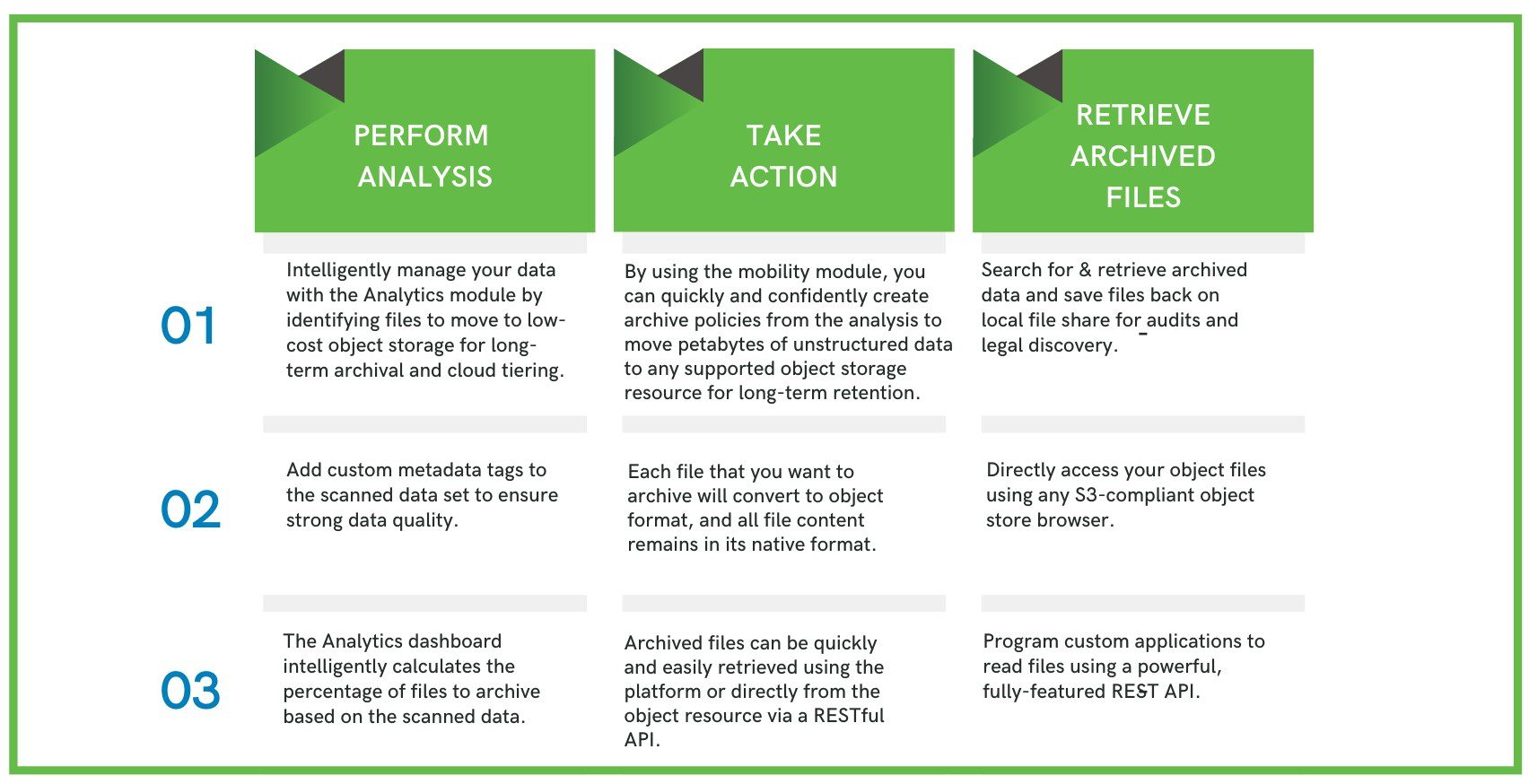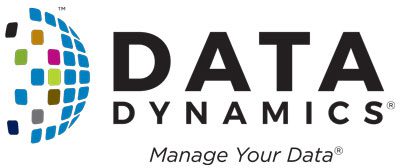The finance industry generates vast amounts of data on a daily basis, from transaction records and customer information to compliance reports and regulatory filings. To comply with regulatory requirements and manage risks, financial institutions need to store and retain this data for a specified period, often for several years. However, managing and archiving data can be complex and time-consuming, requiring significant resources and expertise. In this blog, we’ll explore how unified data management and cloud can simplify data archival in the finance industry, providing benefits such as improved efficiency, cost optimization, and enhanced security.
The Need for Data Archival
Data archival is essential for the finance industry due to regulatory requirements and risk management. Financial institutions are required by law to retain certain types of data for a specified period, such as transaction records, customer information, compliance reports, and regulatory filings. These regulations are intended to protect customers, prevent financial crimes such as money laundering and fraud, and maintain the financial system’s integrity.
Non-compliance with these regulations can have serious consequences, including fines, legal sanctions, and reputational damage. In addition, archived data can be used for analytics, reporting, and decision-making, providing value beyond regulatory compliance. For example, data on customer behavior and preferences can help financial institutions to develop targeted marketing campaigns, while data on transaction trends can help to identify potential risks and opportunities.
Furthermore, data archival plays a crucial role in risk management. Financial institutions can analyze trends and patterns by retaining historical data and detecting anomalies or suspicious activity. This enables them to take proactive measures to mitigate risks and prevent losses, such as fraud or cyber-attacks. In addition, archived data can be used as evidence in investigations and legal proceedings, helping to resolve disputes and protect the interests of all parties involved.
Overall, data archival is a fundamental aspect of regulatory compliance and risk management in the finance industry. It enables financial institutions to fulfill their legal obligations, protect customers and the financial system, and leverage data for strategic decision-making.
Surrounding Challenges
While data archival is a critical practice for regulatory compliance and risk management in the finance industry, it also poses several challenges. One of the biggest challenges is the sheer volume of data that financial institutions generate and must store. With millions of transactions happening daily, storing and organizing such vast amounts of data can be a daunting task. The biggest question here is what to archive and where is it located?
Another challenge is the need to ensure the security and confidentiality of archived data. Financial institutions must ensure that archived data is not vulnerable to cyber-attacks or data breaches. Furthermore, financial institutions must comply with increasingly stringent data protection regulations, such as the General Data Protection Regulation (GDPR) and the California Consumer Privacy Act (CCPA).
Cost is another significant challenge. The cost of storing and maintaining archived data can quickly add up, especially when considering the need for robust backup and disaster recovery systems. Additionally, the cost of upgrading technology and infrastructure to keep up with changing data storage requirements can be substantial.
Finally, there are legal and compliance challenges. Regulations related to data archival are continually evolving, and financial institutions must ensure that their data retention policies remain up to date with changing regulations. Non-compliance with these regulations can result in severe consequences, including legal sanctions, fines, and reputational damage.
In conclusion, while data archival is crucial for regulatory compliance and risk management in the finance industry, it also poses significant challenges. Unified data management, however, can address all these challenges, allowing financial institutions to leverage archived data to make strategic decisions and maintain system integrity.
Unified Data Management: A Solution to Simplify Data Archival
Unified data management is a comprehensive approach to managing data that can help organizations optimize their data archival efforts. With the increasing amount of data being generated by businesses, it is becoming increasingly important to have a clear strategy in place for managing this data throughout its lifecycle. By leveraging a unified data management approach, organizations can gain a better understanding of their data assets and make informed decisions about what data to archive and how to manage it.
One of the most exciting benefits of unified data management is improved data visibility. With a centralized view of all data across the organization, you can see all your data assets and determine the value of each one. This makes it easy to decide which data needs to be archived and which data should be retained for future use.
But that’s not all! Unified data management also streamlines data classification, making it easier to identify data that should be archived. With clear classification based on business value and retention requirements, you can ensure that only relevant data is retained. This is particularly important for compliance purposes, where you need to be able to demonstrate that you have a clear retention policy in place.
And the best part? Automated archival processes! With unified data management, you can automate the archival process, reducing the need for manual intervention and saving you time and effort. By automating the process, you can ensure that the archival process is consistent and reliable, while also reducing the risk of errors.
Improved data accessibility is another benefit of unified data management for optimized data archival. By having easy access to archived data, you can improve collaboration and decision-making by ensuring that relevant data is available when it’s needed. This is particularly important for businesses with remote teams or employees who need to access archived data from anywhere in the world.
And let’s not forget about the cost savings! By automating the archival process and only retaining necessary data, you can reduce storage costs. This is especially true when leveraging cloud-based archival solutions, which provide cost-effective and scalable storage options. By reducing storage costs, you can allocate more resources to other areas of the business and stay competitive in your industry.
Now the question – where to archive? Look up – its the CLOUD!
Cloud: A Solution to Optimize Data Archival
Traditional file storage involves storing data on physical hardware, such as hard drives or servers, within an organization’s own IT infrastructure. In contrast, the cloud involves storing data on remote servers accessed via the internet. While both options have their advantages, cloud is often a better option for data archival in the finance industry for several reasons. Here’s why:
- Firstly, it’s more cost-effective than traditional storage methods, allowing businesses to pay only for the storage they need with a pay-as-you-go pricing model. Say goodbye to the hefty costs of purchasing, installing, maintaining, and upgrading hardware and software upfront!
- Secondly, the scalability of cloud-based data archival is unbeatable. With the ability to add or remove storage capacity as needed, businesses can avoid the hassle of over or underprovisioning storage resources, and eliminate the complexity of managing their own storage infrastructure.
- Thirdly, its highly accessible. The cloud offers anytime, anywhere access to archived data, which is crucial for organizations with dispersed teams or remote employees. With secure and auditable access to archived data from anywhere in the world, businesses can improve collaboration and make informed decisions with ease.
- The security of cloud-based data archival is also top-notch. Cloud providers offer high levels of security, including data encryption, access controls, and disaster recovery capabilities. This provides businesses with peace of mind, knowing that their archived data is protected from unauthorized access, theft, or loss.
- Lastly, cloud-based data archival helps businesses comply with regulatory requirements for data retention. By storing archived data in a secure and auditable cloud storage solution, organizations can demonstrate that they meet their compliance obligations. Cloud providers also offer compliance certifications and audits, which help businesses meet their compliance requirements.
In conclusion, cloud-based data archival is a cost-effective, scalable, accessible, secure, and compliant storage solution. It’s a no-brainer for businesses that want to streamline their operations and focus on what they do best!
The First Step to Effective Data Archival – Structure Unstructured Data
Unstructured data management is a critical step that organizations must undertake before they can begin the process of data archival. Unstructured data refers to data that does not have a pre-defined data model or is not organized in a pre-defined manner. This includes data such as emails, documents, images, videos, audio files, social media posts, and other types of content.
- The first step is to identify the type of data that needs to be archived. This involves analyzing the data to determine its value, relevance, and importance to the organization. Once the data has been identified, it is important to categorize it based on its characteristics, such as file type, creation date, and content.
- The second step is to determine the appropriate storage format for the data. This will depend on factors such as the size of the data, the frequency of access, and the organization’s retention policies. For example, some data may be stored on disk, while other data may be archived to tape or cloud storage.
- Step three involves analyzing metadata for the data, which provides information about the data’s characteristics, such as file type, size, and creation date. Metadata can also include information about the data’s ownership, access controls, and retention policies. This information is critical for managing and retrieving the data during the archival process.
- Then comes step four, setting up policies for data retention and disposal. This includes determining how long data should be retained based on its value and importance to the organization. It also involves developing processes for disposing of data that is no longer needed or has reached the end of its retention period.
- Finally, step 5, establishing procedures for managing and maintaining the data archives. This includes developing processes for backing up the data, monitoring access to the data, and ensuring the integrity and accuracy of the data.
In conclusion, unstructured data management is a critical first step in the data archival process. It involves identifying and categorizing data, determining the appropriate storage format, establishing metadata, developing retention and disposal policies, and establishing procedures for managing and maintaining the data archives. By undertaking these steps, organizations can ensure that their data is properly managed, protected, and retained for future use.
The Data Dynamics Advantage
Data Dynamics is a leading provider of enterprise data management solutions, helping organizations structure their unstructured data with their Unified Unstructured Data Management Platform. The Platform encompasses 4 modules: Data Analytics, Mobility, Security, and Compliance. Proven in over 28 Fortune 100 organizations, the Platform uses a blend of automation, AI, ML, and blockchain technologies and scales to meet the requirements of global enterprise workloads.
One of the key platform offerings is Intelligent Data Archival. With cutting-edge analytics, this feature enables enterprises to intelligently identify files that can be moved to low-cost object storage for long-term archival or cloud tiering.

Here’s a case study on how Data Dynamics Analyzed, Cleansed, Tiered, and Archived 3+ Petabytes of Unstructured Data Using a Lightweight Single Data Management Software for a Fortune 50 multinational automotive company
In conclusion, Data Dynamics is transforming the world of data management by helping enterprise customers eliminate the use of individual point solutions with siloed data views and instead utilize a single software platform to structure their unstructured data, unlock data-driven insights, secure data, ensure compliance and governance, and drive cloud data management. Ultimately, the company’s vision is to help enterprises achieve data democratization so that users, no matter their technical background, can instantly access, understand, and derive maximum insights from unstructured data sprawls.
To learn more about how Data Dynamics can help you archive your data effectively within your enterprise, visit www.datadynamicsinc.com or contact us at solutions@datdyn.com / (713)-491-4298 / +44-(20)-45520800.






